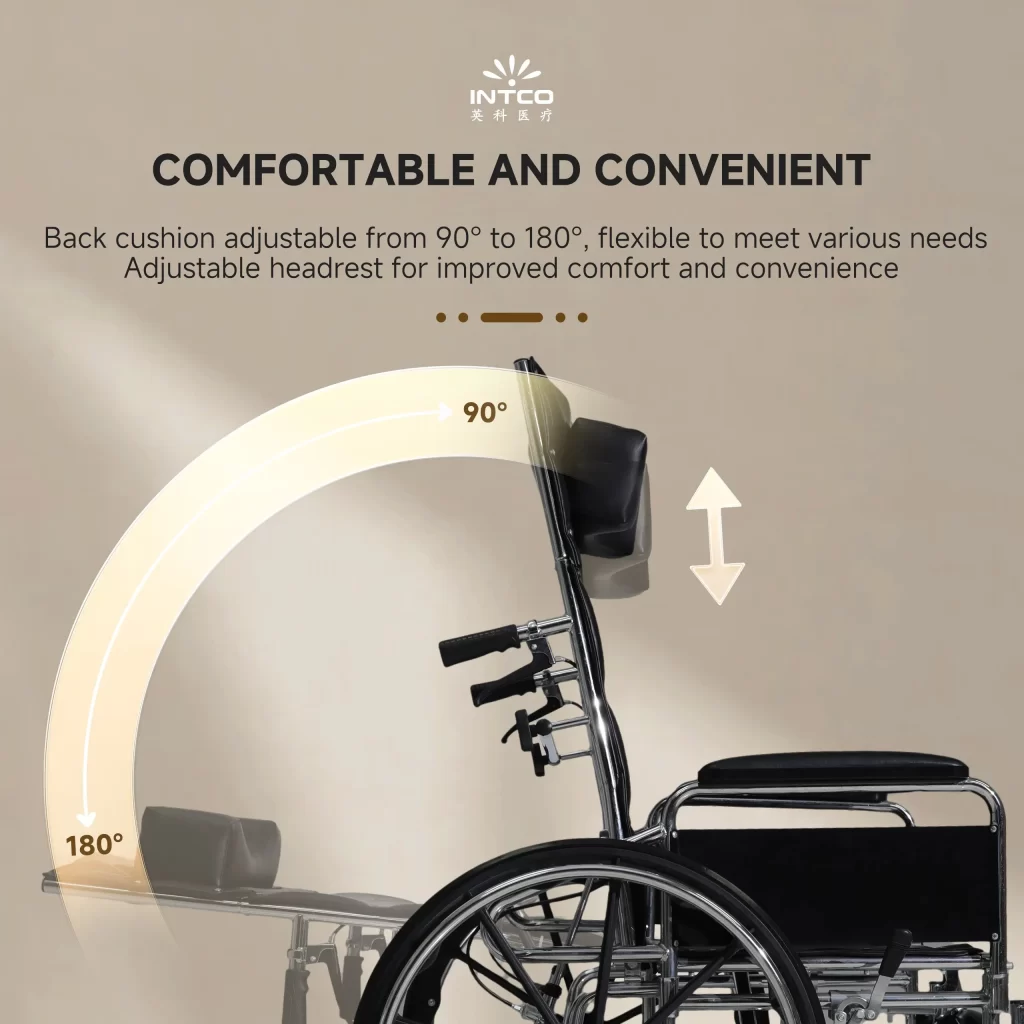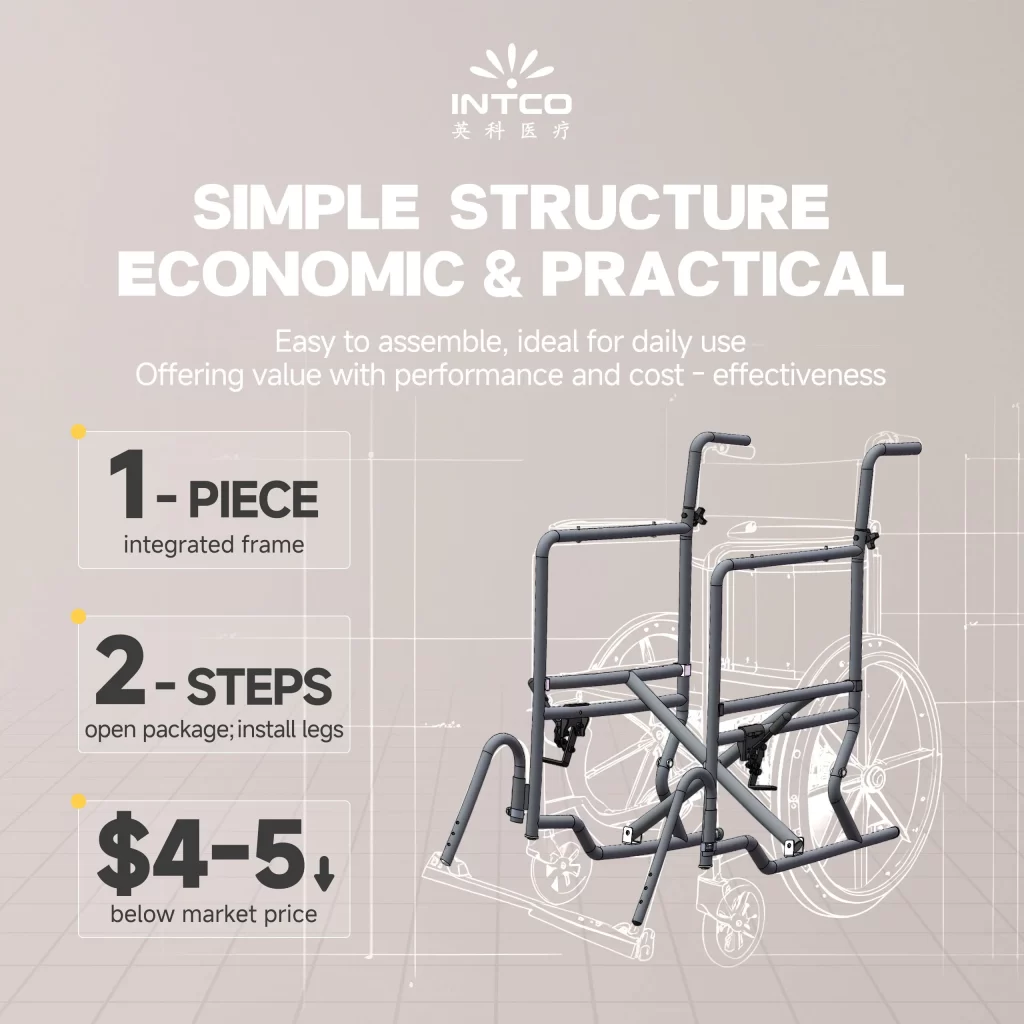Contact Us
How to Choose Between Adjustable and Rigid Manual Wheelchairs
Understanding Adjustable Manual Wheelchairs
Key Features of Adjustable Manual Wheelchairs
Adjustable manual wheelchairs focus on user personalization. They include features crafted for individual wants and needs. Adjustable manual wheelchairs come with movable seat heights. They have adjustable backrest angles too. Armrest positions can shift as well. Footplate settings are flexible. Such adaptability makes sure the wheelchair fits just right. It offers great comfort and support. Being able to tweak these parts helps users sit better. It boosts their movement experience. It also cuts down the risk of pressure sores. Discomfort during long hours of use drops too.
These features aren’t just about comfort. They make daily tasks easier. For instance, a higher seat might help someone reach a counter. A tilted backrest could ease back pain. Flexible armrests allow easier transfers to a bed or chair. Footplates that adjust ensure legs rest properly. This matters for blood flow and joint health. Every small change can make a big difference. Users feel more in control. Their adjustable manual wheelchair becomes a true extension of themselves.
Benefits of Adjustability for Users
Customization Options for Comfort and Support
A top advantage of adjustable manual wheelchairs is their tailored comfort. Users can change various parts to fit their body. This suits different shapes, sizes, and health issues. For example, a backrest can lean back for relaxation. It can also stay upright for better posture. This depends on what the user likes or needs for therapy. Adjustable footplates keep legs in the right spot.
Customization goes beyond physical fit. It boosts confidence too. When a adjustable manual wheelchair feels right, users move more freely. They worry less about discomfort. They can focus on work, hobbies, or socializing. Imagine someone adjusting their seat to join friends at a table. Or tilting their backrest to relax during a movie. These small tweaks improve life’s quality. They make every day a bit smoother.
Adaptability for Changing Needs
Adjustable manual wheelchairs are ideal for shifting conditions. Young users might grow taller. Adults might face new health challenges. Adjustable manual wheelchairs can adapt to those changes. Seats can widen. Backrests can tilt further. Footplates can move up or down. This flexibility keeps users comfortable. It also stretches the adjustable manual wheelchair’s lifespan. There’s less need to buy a new one often.
This adaptability saves time and stress. Families don’t have to shop for replacements constantly. Users avoid the hassle of adjusting to a new chair. For example, a teenager might need a taller seat over time. An adult with a progressing condition might want a reclining backrest later. These adjustable manual wheelchairs evolve with them. They stay supportive through life’s ups and downs. That reliability brings peace of mind.
Exploring Rigid Manual Wheelchairs
Characteristics of Rigid Manual Wheelchairs
Rigid manual wheelchairs stand out for their strong, fixed frames. Unlike adjustable models, they don’t fold or offer many tweaks. Their solid build delivers top performance. It ensures lasting durability too. These wheelchairs are often lightweight. Their simple design cuts excess weight. Active users love them. They seek speed and quick responses.
The lack of moving parts defines them. No hinges or joints clutter the frame. This streamlined look isn’t just stylish. It’s practical too. Fewer components mean fewer repairs. The wheelchair stays tough through daily wear. It’s a favorite for those who push their limits. Whether racing or roaming, it keeps up.
Advantages of Rigid Frame Design
Enhanced Performance and Maneuverability
The rigid frame ramps up performance. Without hinges or joints, energy flows directly from arms to wheels. This makes movement smooth. Handling feels sharp and precise. Users glide with less effort. This suits sports players or busy folks. Quick turns and fast rolls become second nature.
Picture a user weaving through a crowded park. Or speeding down a ramp with ease. Rigid wheelchairs make those moments possible. They respond instantly to every push. That efficiency saves energy. Users can go longer without tiring. It’s perfect for active lifestyles or demanding days.
Durability and Reduced Maintenance
Rigid wheelchairs have fewer parts to wear out. This boosts their toughness. They need less upkeep than adjustable models. The sturdy frame takes on rough use. It handles bumpy paths or rocky trails well. For active users, this reliability is a game-changer.
Maintenance stays simple too. No bolts to tighten constantly. No hinges to oil. This saves time and money. Users can focus on living, not fixing. A rigid wheelchair becomes a trusted partner. It’s ready for adventure whenever they are.
Factors to Consider When Choosing a Wheelchair
User’s Lifestyle and Daily Activities
Picking between adjustable and rigid wheelchairs hinges on lifestyle. Some users need flexible seating. They might expect health changes. Adjustable models suit them best. Others crave speed and low upkeep. Rigid wheelchairs fit their needs perfectly.
Daily routines shape the choice too. Someone working in tight office spaces might want adjustability. It helps them shift positions for comfort. An athlete, though, might pick a rigid model. Its quick response aids fast moves. Each user’s day guides the decision.
Physical Needs and Comfort Preferences
Physical needs steer the choice. Adjustable manual wheelchairs offer more tailoring. They’re great for specific health conditions. They also help those healing from injuries. Rigid models focus on performance. They ensure comfort for shorter bursts.
Comfort preferences matter just as much. Some users want a chair that feels custom-made. Others prioritize a lightweight frame for speed. Both options balance support and ease. It’s about what feels right for the body.
Long-Term Goals and Mobility Requirements
Long-term plans highlight key factors. Durability matters for daily use. Ease of transport affects travel. Adaptability shapes future needs. Adjustable manual wheelchairs flex with changes. They support evolving health. Rigid models shine for steady performance. They thrive over long periods.
Both types serve unique purposes. Adjustable chairs offer tailored support. Rigid ones deliver strength for active lives. The right choice aligns with personal goals. It ensures mobility stays smooth for years.
Comparing Adjustable and Rigid Manual Wheelchairs
Performance Differences in Various Environments
Adjustable manual wheelchairs excel in flexibility. They adapt to many settings. Users can tweak seat heights or backrest angles. This ensures comfort indoors or out. Tight spaces need sharp turns. Rough ground demands stability. These chairs handle both well.
Rigid wheelchairs prioritize performance. Their firm frames boost energy flow. Arms push, and wheels respond fast. This suits sports fields or uneven paths. Smooth motion and quick handling shine here. Yet, their fixed design limits tweaks. Users with changing needs might find them less ideal.
Weight, Portability, and Storage Considerations
Adjustable manual wheelchairs carry extra weight. Customization parts add bulk. This can make them harder to lift. Transporting them feels tougher. But foldable frames help. They shrink for storage. Cars and small rooms become easier to manage.
Rigid wheelchairs stay lighter. Their simple build skips extra parts. Carrying them feels effortless. Storage is a breeze too. Narrow spaces pose no issue. But they don’t fold. Fitting into tight vehicles can be tricky.
Cost Analysis: Initial Investment vs. Long-Term Value
Adjustable wheelchairs cost more at first. Their advanced features drive up prices. Yet, their flexibility saves money later. They adapt to health shifts. This delays the need for new chairs. Long-term, they’re budget-friendly for changing needs.
Rigid wheelchairs start cheaper. Their tough frames last ages. Upkeep stays low too. For users valuing performance over tweaks, they’re a smart buy. Durability ensures value over time.
Introducing INTCO Medical’s Wheelchairs
Overview of INTCO Medical’s Product Range
As one of the famous brands in the production and manufacture of medical wheelchairs and mobility scooters, INTCO Medical is a high-tech manufacturing company committing to R&D, production and marketing of medical consumables and durable medical equipment with main business covering medical consumables, rehabilitation equipment, physiotherapy care, etc.
Up to now, with a good product reputation, INTCO Medical has been exported products to more than 120 countries and regions in America, Europe, Asia, Africa and Oceania, which is providing practical products and high-quality services to over 10,000 clients.
Jiangsu Intco Medical Products Co., Ltd, a branch of Intco Medical, focuses on the research, production, and marketing of rehabilitation equipment and therapy products. We specialize in manual and electric wheelchairs, mobility scooters, transfer machines, walking aids, commode chairs, and canes. With hundreds of automated machines, we can produce 1,000,000 manual wheelchairs and 100,000 electric wheelchairs annually, serving over 66 countries and regions worldwide.
How INTCO Medical Meets Diverse Mobility Needs
INTCO gets what wheelchair users need. Their products reflect this care. Adjustable wheelchairs offer tweaks like seat sizes or backrest tilts. These ensure a perfect fit. They help users with health conditions. They also aid those in recovery.
Rigid wheelchairs target active users. Their light frames handle tough use. They move smoothly and respond fast. This suits sports or busy routines. INTCO blends smart engineering with user focus. Their products balance quality and function. Mobility feels personal and reliable.
FAQ
Q: What are the current market trends for manual wheelchairs in 2025?
A: The manual wheelchair market is experiencing a shift due to rising demand for mobility aids driven by global aging populations. In 2023, the global wheelchair market was valued at $4.8 billion, with manual wheelchairs holding a significant share due to affordability. However, manual wheelchair demand is declining slightly, with a reported sales growth drop compared to electric wheelchairs, which saw a 120% sales increase in China’s Q1 2024 online market. Rigid manual wheelchairs are gaining traction for active users due to their lightweight design, while adjustable models remain popular for versatility.(Resource from Chat GPT)
Q: How do adjustable manual wheelchairs compare to rigid ones in terms of user demand?
A: Adjustable manual wheelchairs dominate in scenarios requiring customization, such as for growing children or users with progressive conditions, holding about 60% of manual wheelchair sales in developed markets based on 2023 estimates. Rigid manual wheelchairs, preferred by active users like athletes, account for roughly 30% of the manual segment, with demand growing 5% annually due to advancements in lightweight materials like carbon fiber.(Resource from Chat GPT).




